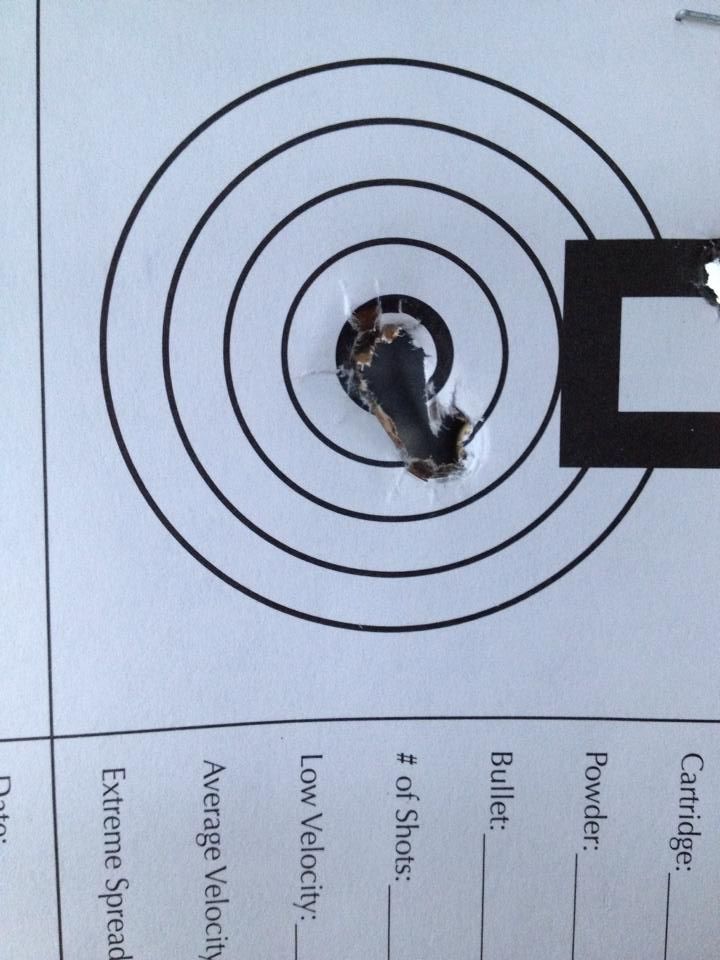secondofangle, the shooting community doesn't do itself any favors by habitually failing to distinguish "accuracy" from "precision." Then we wonder why we can't make sense of issues like this. Group size is a measure of precision, not accuracy. If group size increase slows at greater ranges, then statistically, precision
is increasing. But accuracy isn't. If dispersion increases by 1" before the bullets go to sleep, that's 1" of
accuracy that ain't never coming back.
I have never witnessed this first-hand but logic dictates this only should happen when shooters are pushing the limits of stability with their bullet/twist combination. Which is why the DoD standard is a stability number (Sg) of 1.5-2.0, while civilian sources suggest a minimum Sg of 1.4. By definition, a bullet/twist combination with an Sg of 1.0
should be "stable," but undoubtedly would take longer to go to sleep, and would have no margin for error.
Bob McCoy, a highly-regarded ballistician, wrote in his 1999 book, "Modern Exterior Ballistics" that epicyclic swerve was the cause of the phenomenon. The late Gale McMillan (founder of McMillan Rifles) echoed that sentiment, further explaining that minor variations in muzzle velocity caused the bullets to strike the target at different points around what he termed "the spiral" before they go to sleep.
I've seen the term "helical" used in relation to the epicyclic path, but McMillan is the only one I've come across who called it "spiral," but I suspect he was toning down on the 50¢ words in deference to his audience.
However, Bryan Litz considers this exact point (even referencing McCoy's book) in an article on epicyclic swerve
on his Applied Ballistics web site:
The theory goes:
“The bullet leaves the barrel with some degree of pitching and yawing motion. At short ranges, before the pitching and yawing damp out (i.e., before the bullet ‘goes to sleep’) epicyclic swerve is responsible for larger groups because the bullet is flying on a ‘corkscrew’ trajectory. After the bullet ‘goes to sleep’, the bullet flies straighter, allowing smaller groups at longer range”.
His simulation (using a custom 6DoF simulation software) indicated that dispersion owing to epicyclic swerving should be on the order of
hundredths of an inch. Video of the simulation is on that same web page, definitely worth a minute and a half of your life to help you get your mind around the concept.
Litz concludes,
The phenomenon of smaller angular groups at longer ranges was not disproven. The only thing I've shown is that if the phenomenon actually happens, epicyclic swerve is not the cause of it.
Note his word choice: "smaller angular groups at longer ranges". Not smaller
groups, smaller
angular groups. He effectively is dismissing the matter of smaller
groups out of hand, but is unconvinced on the subject of smaller
angular groups.
Judging from his conclusions, Litz has never witnessed this phenomenon either (or at least hadn't at the time of this writing). But Gale McMillan did.
He once wrote,
We shot 18000 rounds of 50 cal ammo during a contract. The guns were sighted in and function tested at 100 yards and averaged 1.5 moa groups. When these same guns were tested at 600 yards you would expect the groups to run 1.5 moa or 9 inches. The 600 yard targets ran as small as 3 inches and never any larger than 6 inches as an average. Any that shot larger than 9 inches were inspected and retested.
So McMillan seemed pretty convinced this "smaller
angular groups" phenomenon does in fact occur (as are more than a few other shooters). If this had happened to Litz, I'd bet he'd devise a way to get to the bottom of the topic.
As an aside, while I was researching this topic, I came across a report from the Army Research Laboratory indicating that the penetrator (the 'dart') from a fin stabilized "sabot" round also experiences yaw and pitch excursions immediately after exiting the muzzle, and for the exact same reasons spin-stabilized bullets do. At that moment, I had an epiphany.
I was trained in tank gunnery back when the main guns still were rifled. When we were briefed on the construction of the (APFSDS) sabot rounds then in use, the instructor made note of the fact that the driving bands on the sabot doubled as a bearing. The driving bands were what engaged the rifling, so they couldn't help but spin, but they were designed to pass as little as possible of the spinning along to the sabot.
At the time, I puzzled over why you would even want to isolate the sabot from the spin of the rifling. When I read the ARL report, it hit me. Pitching and yawing is just pitching and yawing, until you add rotation. Rotation brings with it gyroscopic precession, which couples with yawing and pitching to produce epicyclic swerving. Which adds another (unnecessary) variable to the sabot round's external ballistics, so they use slippery driving bands to prevent it.

The white ring girdling the sabot is the 'slippery' driving band.
Inquiring minds want to know (even if it takes 100 years to figure it out).










